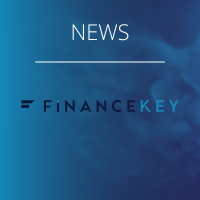This due to its decentralised nature and potential applications across various industries. But there are still a number of issues that are limiting its uptake by various industries esp. the financial sector.
By far the most widely recognised problematic issue is that of interoperability. Most blockchains are unable to communicate and share data with each other, limiting their potential applications and benefits. As more industries are willing to adopt blockchain technology the subject of blockchain interoperability is becoming more and more prominent.
In this blog we will look at the blockchain interoperability issue in general, what it is and why it is urgently needed. We thereby will explore the concept of the various interoperability approaches and the interoperability tools that are used in achieving seamless communication. But above all what they may deliver as well as the remaining challenges.
What is blockchain interoperability?
The term blockchain interoperability is increasingly being talked for some time now. It refers to the ability of different blockchain networks to interact seamlessly thereby enabling the exchange of data and the transfer of assets without the need for intermediaries or central authorities. So, blockchain projects that want to implement interoperability into their platform aim to create an ecosystem that will enable different blockchains to communicate in a proper way with each other. The vision of interoperable enterprise blockchains thereby rests on a number of functionalities and abilities including: integration with existing systems, initiate transactions on other networks, conduct transactions with other chains, and making it easy to switch one underlying platform for another.
Why is blockchain interoperability urgently needed?
It is easy to see why interoperability for blockchain is not only desirable, but above all critical. Individual blockchain networks are not inherently open. They are siloed systems, operating in isolation alongside each other, all of which have different characteristics such as specific protocols and standards, hashing algorithms, or consensus models.
The result is a series of unconnected blockchains that cannot communicate properly with one another, preventing the seamless flow of data and value across different networks. This lack of interoperability and connectivity poses a significant obstacle to the broader adoption and further innovation of blockchain technology.
Achieving blockchain interoperability is essential for the growth and development of blockchain technology, as it can help overcome the current limitations and unlock the true potential of decentralised networks. To get more out of blockchain technology, interoperability is crucial for seamless communication and transfer of data and assets between different blockchain networks. It would enable smooth information sharing, easier execution of smart contracts, a more user-friendly experience, the opportunity to develop partnerships, and the sharing of solutions.
Where is blockchain interoperability urgently needed?
Especially in areas where the value chain is important, such as finance or supply chain and trade finance, but nowadays also Web3 one blockchain network will simply be unable to provide all the needs for any given transaction or activity. This asks for multiple networks, each providing specific value, and proper communication so that data from private networks can be routed to other relevant networks for transactions “without having to establish a one-to-one integration”.
The financial sector is most interested in blockchain interoperability, due to the sector’s need for secure data exchange and efficient transactions. Additionally, blockchain technology provides transparency and enhanced security, making it an ideal solution for the financial industry. Furthermore, the financial sector’s heavy regulation and compliance requirements drive the adoption of blockchain interoperability solutions.
Blockchain interoperability is also essential to the development of Web3 and may allow the complete transition from Web2 to Web3. Successful Web3 apps must be able to connect to all blockchains easily and users can seamlessly use apps across chains allowing tokens and data to move securely across blockchains or switch from one blockchain network to another.
Blockchain interoperability approaches
Interoperability between blockchains can be facilitated by different approaches and technologies. Most of the interoperability approaches up till recently were mainly focused on chain interoperability across public blockchains, thereby using crypto-directed solutions like cross chains, sidechains (or relay chains), and notary schemes. The first two operate solely on-chain, while the latter feeds off-chain data on-chain. The focus however is increasingly shifting towards solutions for interoperability between private networks and/or between private networks and public blockchains, the so-called network of networks model. This model for interoperability continues to gain momentum.
1 Cross chain bridges
The most well-known interoperability solution to enable blockchain networks to interact is using a separate blockchain as a bridge to facilitate the exchange of data, assets and messages between different blockchain networks without the need for intermediaries, better known as cross-chain bridges.
Essentially, this is a third blockchain that sits in the middle of the two blockchains and maintains a cryptographically secured timestamped ledger of the transactional and messaging activity between the two. Interoperability tools that are used range from hub and spoke to general-purpose bridges.
– Token bridges
Token bridges permit users to move assets from one blockchain network to another. The process of doing this will vary from bridge to bridge. Some bridges may use the lock and mint mechanism. In this process, a smart contract locks a crypto asset in a source chain while a different smart contract mints a cloned version of this asset on a destination network. Other bridges may operate by burning tokens on the source chain and then minting the same tokens on the destination chain. Moreover, a different type of token bridge locks tokens on the source chain and then unlocks them from a liquidity pool (a collection of crypto assets held in a smart contract) on the destination chain. Token bridges that use this mechanism encourage people to provide liquidity on both sides of the bridge by creating incentive schemes like revenue sharing.
– Trust-based versus trustless blockchain bridges
Blockchain bridges are inherently centralized. If a user wishes to convert their coins into another form of cryptocurrency through them, they will have to temporarily hand over control of those coins. There are also decentralized bridges that offer users the option of transferring coins without a third party’s knowledge, but these services are freelance-based and not always dependable.
2 Side chains
Sidechains are separate and independent blockchains that are connected to the main blockchain through a two-way peg or bridge to improve the scalability by helping process some of the data from the main blockchain. This two-way peg acts as an intermediary which locks an asset in one blockchain to reserve it until the transfer to the other one is completed. Although sidechains have a connection to the parent blockchain, they use separate consensus algorithms and have different native tokens.
Sidechains, layer 2 scaling solutions also provide blockchain interoperability by validating data from other blockchains. It allows the transfer of digital properties between the two blockchains at an agreed-upon price or exchange rate using so-called Simplified Payment Verification (SPV) proofs. Through SPVs, the nodes on the sidechain can verify if the transaction has been initiated on the other blockchain and are not required to download the whole main blockchain every time the verification process is needed. An example of side chains is Polygon that seeks to scale Ethereum by improving its transaction throughput.
3 Notary schemes
Transactions under the notary scheme method between the two users on different blockchains rely on a third-party notary, handling parties’ lack of trust. A notary’s role is to verify blockchain events and feed that information to a second blockchain. To accomplish this, the notary should be registered and have accounts on both blockchains – the source and the target.
There are two types of notaries that may be used: a single-signature notary or a multi-signature notary. A single-signature notary collects transaction data from a source chain and validates it before initiating a transaction on a target chain. To achieve cross-chain interoperability with high transaction speed, single-signature notary schemes are an interesting solution. The disadvantage is that it relies on a centralized body. Additionally, it is vulnerable to individual node failures and misbehaviours.
Multi-signature notaries require that a cross-chain request initiated by user one on the source chain is successfully verified by the majority of nodes. After signatures from multiple nodes are verified, the corresponding transaction is added to the target chain. In order to tolerate Byzantine faults, a Byzantine-fault-tolerant consensus algorithm is used, so cross-chain transactions can only be processed and transmitted to a target blockchain if over two-thirds of notaries reach consensus and sign the transaction.
Notary schemes are used by platforms such as Herdius – a decentralized exchange platform – and Bifrost for interoperability between blockchains.
4 Network of networks model
A recently introduced and more efficient and scalable way to build interoperability is through the joint effort of establishing industry standards as well as identifying a network of networks structure that industry networks can converge around. An organizations blockchain network actually represents a ”web” of interconnected networks. This architecture would allow an organization to connect and transact with multiple solutions, not restrained to a single network, and open up a market of interoperability across solutions. By unlocking the power of the peer, organizations can use their peer to connect into multiple blockchain networks via channels. This significantly reduces the complexity and optimizes an organizations interaction with different blockchain networks.
Cross-Chain Technology methods and tools
There are several methods used to facilitate cross-chain transactions, each with its unique set of advantages and challenges. Some of the most common tools include atomic swaps, relays, oracles and protocols. But there are many more other interesting interoperability tools.
Atomic Swaps
Atomic swaps are a technique for the cross-chain transfer of assets on different blockchain platforms without the need for trusted third parties or notaries. The atomic swap takes place with the help of a special type of smart contract between the users on different blockchains called a hashed time lock contract. Atomic swaps may promote liquidity across different blockchain ecosystems. This technique does not permit the transfer of a token from one blockchain to another but enables users to hold its ownership on a different blockchain. They can trade a token on one blockchain and get a different token on another chain. By that, users are free to choose on which blockchain they want to keep their assets.
Relays
Blockchain relays are systems built within blockchains that enable blockchain networks to monitor transactions and events occurring on other chains. They can validate and read events and/or states in other blockchains. Relays work on a chain-to-chain basis, allowing a single contract to act as a central client for multiple nodes on different chains. With relays, one blockchain can check the data of other blockchain networks without having to rely on exterior third-party resources. This enables the relay to verify the entire history of transactions and specific headers on demand. However, it is very difficult to connect existing blockchains that do not share similar characteristics.
Data oracles
Data oracles play a crucial role in facilitating cross-chain interoperability by providing off-chain data to on-chain smart contracts. An oracle will act as a bridge between the on-chain world and off-chain legacy systems. Essentially an oracle is an agent that transfers external data to the blockchain platform for on-chain processing. They permit blockchain networks to engage with off-chain data. As a result, smart contracts can execute based on data from the real world. That makes oracles essential since smart contracts require real-world data stored in external systems to execute different use cases.
Some of the most popular oracles in the blockchain industry are Chainlink, Universal Market Access, API3, Band Protocol, Nest Protocol, XYO Network, iExec RLC and WINkLink.
Protocols
Various protocols and standards have emerged to facilitate cross-chain compatibility. Unlike distinct blockchains that operate in isolation, interoperability or cross-chain protocols aim to bring together multiple blockchains that can interact and communicate seamlessly with one another. They provide a common layer of standards, rules, or interfaces for interoperability. Interoperability protocols could also enable seamless execution of smart contracts and the development of cross-chain dApps.
Among the most commonly used interoperability protocols are Chainlink’s Cross-Chain Interoperability Protocol (CCIP); Inter Blockchain Communication (IBC) of Cosmos, and the Cross-Consensus Message Format of Polkadot.
Major interoperability solution projects
A growing number of interoperability projects have entered the scene to try to bridge the gap between the various blockchains. Each with their own features, benefits, or challenges. Their aim is to facilitate interaction between networks and ensure the concept of decentralisation is fully realised. Leading cross-chain projects are Chainlink, Cosmos, Polkadot, Wanchain and recently also the Canton Network, each focusing on different aspects of interoperability.
Chainlink is a decentralised oracle network, an interoperability solution to facilitate secure and trustless communication between all disparate blockchain systems.
The resources mostly revolve around off-chain data to trigger smart contracts and settlement outputs like established payment systems and cloud backend. This standalone function is important for many blockchains that don’t have to interact with other blockchain protocols but do need access to externals inputs and outputs. Chainlink launched its Cross-Chain Interoperability Protocol (CCIP), that allows a user to have assets on one chain and interact with contracts on another that uses cross-chain messages instead of a bridge.
Cosmos act as an ecosystem of blockchains that can scale and interoperate with each other. It is a network of blockchains (called zones) connected through the Cosmos Hub and the inter-blockchain communication protocol (IBC), that allows communication between a central hub and the chain linked to the network, enabling users to transfer value from one chain to another. Their architecture is based on the so-called ‘hub-and-spoke’ system whereby a series of ‘spoke’ chains connect to a ‘central’ hub by means of inter-blockchain communication.
Polkadot is a network of networks that connects and secures multiple blockchains using parachains and native bridges, enabling them to communicate and transfer both value and data. Polkadot thereby facilitates interoperability between non-interoperable blockchain networks. This works because chains plug into a connectivity layer, called the Polkadot Relay chain, where they use the pooled security system of Polkadot to confirm transactions. The concept is quite similar to that of Cosmos. It uses the DPoS algorithm and employs required validators which can lead to e certain degree of centralisation.
Wanchain is a blockchain that introduces interoperability through decentralized bridges that connect siloed blockchain networks. The Wanchain project aims to build an interoperable Web3 ecosystem where all blockchains can communicate and exchange value and data with each other, including Ethereum Virtual Machine (EVM)-compatible blockchains and their non-EVM counterparts. This is done through storeman nodes and the T-Bridge framework. The Wanchain network allows interoperability between very heterogenous blockchains.
The Canton Network, the industry’s first privacy-enabled interoperable blockchain network designed for institutional assets and built to responsibly unlock the potential of synchronized financial markets, was launched last May by Digital Asset (a network that facilitates deal flow between investors, issuers, and solution providers) and leading market participants. The Canton Network will provide a decentralized infrastructure that connects independent applications built with Daml (Digital Asset’s smart-contract language). The Canton Network removes existing obstacles by uniquely balancing the decentralization of a network with privacy and control essential to operating within a safe and sound regulatory environment. It creates a ‘network of networks’, allowing previously siloed systems in financial markets to interoperate with the appropriate governance, privacy, permissioning and controls required for highly regulated industries.
Canton Network participants include names like BNP Paribas, Capgemini, , Deloitte, Deutsche Börse Group, Digital Asset, The Digital Dollar Project, DRW, Goldman Sachs, Microsoft, Moody’s, SBI Digital Asset Holdings, and others.
What may blockchain interoperability bring?
Each of these blockchain interoperability technologies can offer several advantages. They hold potential for improving the efficiency and scalability of blockchain networks. They can also help reduce segmentation, allow for more freedom in the flow of information and assets between various networks, creating more flexibility enhancing the functionality, discourage monopolisation by large entities, while it may open up new business boundaries and models.
Greater scalability
By connecting different blockchains and facilitating communication between different blockchain networks, it is possible to leverage the strengths of multiple networks, enhancing the scalability of the entire ecosystem, enabling it to handle a greater number of transactions and users.
Seamless communication
Blockchain interoperability also enables seamless communication and interaction between multiple parties operating on different blockchain networks. This may facilitate sharing of information such as transaction receipts and smart contracts as well as cross-border transactions including asset transfers, token swaps, interbank settlements, insurance claims processing.
Increased efficiency
Interoperability allows for the seamless transfer of data and assets between different blockchain networks, reducing the need for manual processes and intermediaries. This may further streamline the process of exchanging and transferring data and assets between different networks, allowing for faster and more efficient transactions.
Increased decentralisation and reduced fragmentation
Interoperability creates a network of connected chains that people can use instead of having a few siloed chains that dominate the market. This can help increase decentralization across the entire sector and give rise to an interconnected multi-chain world. Connecting these blockchains can also help reduce fragmentation and pave the way for a more unified ecosystem.
Enhanced innovation
By creating a more balanced ecosystem, cross-chain interoperability technology can help prevent large corporations from dominating the market and encourage greater competition and innovation in the blockchain space. Interoperability can encourage innovation by allowing developers and businesses to build and deploy applications across multiple blockchain platforms, taking advantage of the unique features and capabilities of each network.
More efficient Web3 ecosystem
Blockchain interoperability can create a more efficient Web3 ecosystem where data sharing and moving value is seamless across different types of blockchains. Private blockchains can communicate with public ones and vice versa.
Main challenges and trade-offs of interoperability solutions
Interoperability solutions are not without challenges. Many of these interoperability solutions favour “speed of development” over security. Cross-chain Bridges are particularly susceptible because they provide two ends at which hackers can potentially infiltrate any vulnerabilities. Security and integrity of the bridge, complexity, sovereignty, and the resulting costs are some of the main challenges and trade-offs associated with interoperability solutions.
Addressing security concerns
Ensuring the security and integrity of cross-chain bridge transactions is a big challenge. The bridge itself serves as a critical communication link between the two networks. Any vulnerabilities or weaknesses within one system could have significant implications for another ecosystem. These solutions can potentially increase the probability of attacks and present new governance challenges among different blockchain networks.
– Different trust models
Blockchains do not have the same level of trust or security. Every blockchain ledger has a different trust model – some are supported by hundreds of miners, and others by only a few. By transferring information from a less reliable ledger to a more reliable one, the more robust blockchain can be manipulated by outside parties and compromised.
– Manipulation
Transferring data or digital assets from a less secure blockchain to a more secure chain can also leave the latter vulnerable to manipulation. If the bridge is compromised, malicious actors could gain access to sensitive information or assets.
– Hacks
The security risks associated with holding assets across multiple blockchains can be significant, opening the door for hacks and potential loss of funds. Hackers are constantly probing existing blockchain bridges for vulnerabilities and are often successful at finding them. Many of these hacks have come from multi-signature security setups or proof-of-authority consensus mechanisms, which are considered to be centralized and much more vulnerable.
Technical complexity
Different blockchains may have different security solutions, consensus algorithms and programming languages, which can add to the technical complexity. This complexity can increase the difficulty of developing, deploying, and maintaining DAOs, while also affecting their usability, accessibility, and security. Another barrier to blockchain interoperability is compatibility. It is easier connecting blockchains that are compatible with each other than those that aren’t.
Issue of finality
Another important challenge is the issue of finality – the guarantee that funds will be available on the destination chain once they are committed to the source chain. Without finality, a reversed transaction on the source chain, such as a block reorganization, might cause issues on the destination chain – for example, unbacked bridged tokens. Without a guarantee of finality, the bridge between the two chains is just as vulnerable to collapse.
Sovereignty and autonomy
Moreover, interoperability solutions can affect the sovereignty and autonomy of DAOs by depending on or influencing the decisions of other systems or entities. This can lead to conflicts with their values or goals and affect their alignment, trust, and reputation.
Moving forward
Blockchain interoperability is a critical component of the future of blockchain. Despite the various challenges of present solutions especially for those using bridges, new and more innovative blockchain interoperability solutions are arriving that hold great promise for the future of blockchain interoperability.
Especially the interconnected network of networks solution, connecting different networks to work together seamlessly in a standard-based, open way, can help overcome current limitations and challenges and unlock the true potential of decentralised systems.
By enabling seamless and secure communication and data transfer between different networks, it can help pave the way for a more unified/connected, efficient and user-friendly blockchain ecosystem.
We may say that Blockchain seems to be at the threshold of widespread acceptance and adoption.












